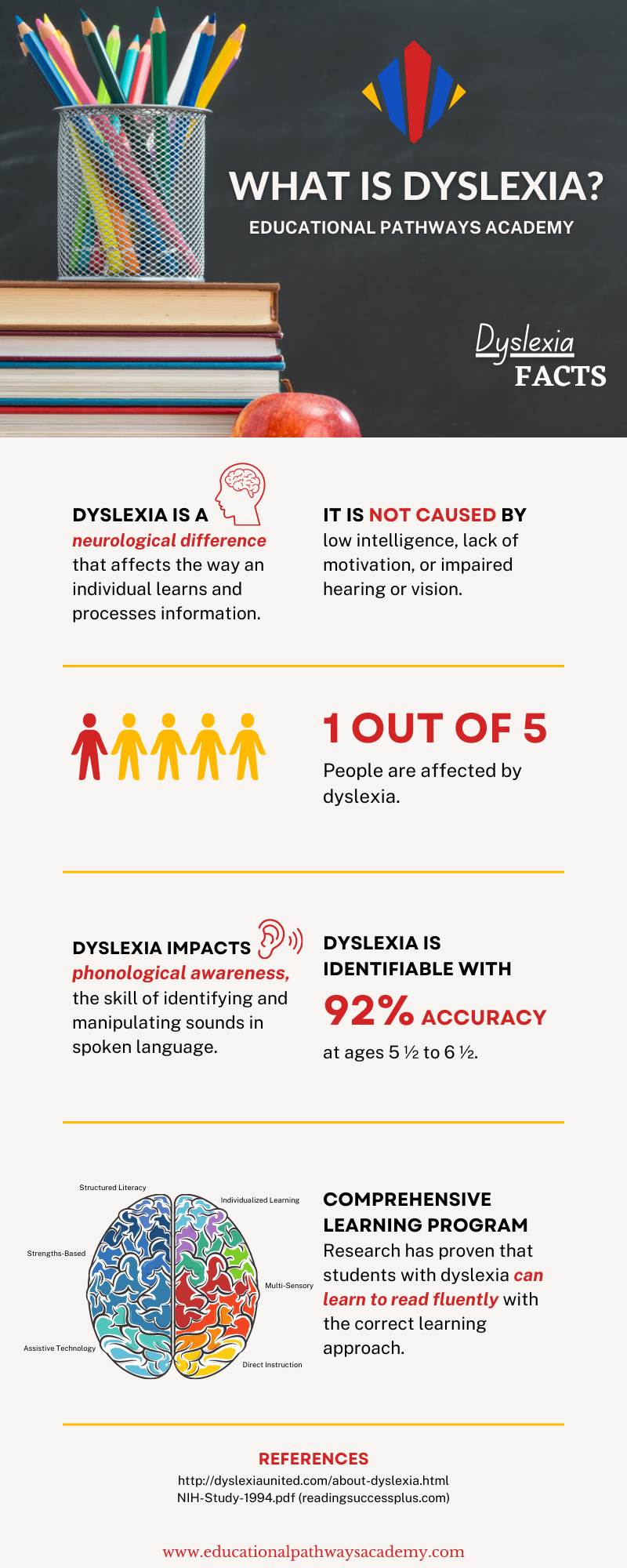What is Dyslexia?
What is Dyslexia?
Dyslexia is a neurological difference in the way a person learns and processes information. It can have a dramatic affect on a student’s ability to understand and identify the relationships between written letters and spoken sounds. Students with dyslexia have difficulty with phonological awareness and decoding, which are foundational skills needed for reading. Dyslexia makes reading, writing, and spelling extremely challenging for students, despite having average to high intelligence.
Dyslexia is very common. It affects 1 in 5 people and accounts for 85% of those with learning disabilities. It is not caused by low intelligence, lack of motivation, conditions at home, or impaired hearing or vision. Dyslexia is a lifelong condition that is not currently treated with medications, but with educational interventions.
What Causes Dyslexia?
The exact cause of dyslexia is unknown. However, it has been linked to several specific genes, making it often hereditary. Dyslexia can be found in approximately 40% of siblings and 49% of parents.
what is a neurological difference?
The brain is not naturally wired to learn to read. It does not have a single area that functions specifically for reading. Instead, it utilizes multiple brain regions that are purposed for other functions such as spoken language and object recognition to create neural pathways for reading. Research in neuroscience suggests that the brain of students with dyslexia functions differently while reading than those who do not have it.
Through brain scans, scientists have identified three dominant areas in the left-brain hemisphere that activate while reading. However, for those with dyslexia, only one of these areas is activated, Broca’s area. Since it is the only area of the brain that is stimulated while reading, this area is a larger size because it has to compensate for the lack of activity in the other parts of the brain.
The neurological differences of students with dyslexia cause them to learn and process information differently. These students can learn to read accurately and fluently. However, they need to be taught with different educational approaches and techniques such as Orton-Gillingham in order to create the necessary neural pathways for reading.
Succeeding with Dyslexia
Educational Pathways Academy’s Comprehensive Approach to Learning effectively addresses the needs of students with language-based learning disabilities such as dyslexia. Our educational approach utilizes evidence-based methods and approaches such as Orton-Gillingham, hands-on, multi-sensory activities, individualized learning, assistive technology, and more.

